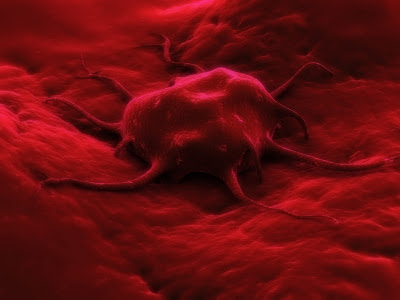Malignant Pleural Mesothelioma Is A Highly Aggressive And Challenging Cancer
Malignant Pleural Mesothelioma Is A Highly Aggressive And Challenging CancerOne interesting study is called, “The histopathological diagnosis of malignant mesothelioma v. pulmonary adenocarcinoma: reproducibility of the histopathological diagnosis” by B.G. Skov1,3,A.F. Lauritzen, F. Hirsch, H.W. Nielsen Histopathology - Volume 24, Issue 6, pages 553–557, June 1994.
Here is an excerpt: “In a randomized design we examined the interobserver variation in the histopathological diagnosis of adenocarcinoma of the lung and malignant mesothelioma. In three rounds, three pathologists assessed slides from 42 tumours originally diagnosed as adenocarcinomas, malignant mesotheliomas or benign lesions in the pleura.
In the first round the assessments were made on haematoxylin and eosin (H & E) stained sections; in the second, on H & E sections plus sections stained with histochemical mucin stains; and in the final round, the diagnoses were made on H & E sections and sections stained with a panel of antibodies against various antigens (cytokeratin, EMA, CEA, Ber-EP4, B72.3, Leu-M1, vimentin and S-100 protein) said to be of value in the differential diagnosis. The overall interobserver agreements for the three rounds were 0.659, 0.802 and 0.817; the kappa values were 0.461, 0.681 and 0.690. It is concluded that differentiation between adenocarcinoma of the lung and malignant mesothelioma should be made on sections stained with H & E and mucin and/or immunohistochemical staining reactions, including antibodies against B72.3. Ber-EP4 and CEA.”
Another study is called, “Wnt2 as a new therapeutic target in malignant pleural Mesothelioma” by Julien Mazieres, Liang You, Biao He, Zhidong Xu, Sarah Twogood, Amie Y. Lee, Noemi Reguart, Sonny Batra, Iwao Mikami, David M. Jablons, - International Journal of Cancer - Volume 117, Issue 2, pages 326–332, 1 November 2005. Here is an excerpt: “Malignant mesothelioma of the pleura (MPM) is a highly aggressive neoplasm with a poor prognosis and limited treatment options. A better understanding of its pathogenesis is essential to developing alternative therapeutic strategies.
We previously demonstrated that the Wnt signaling pathway is activated in MPM through the overexpression of disheveled proteins. To extend our knowledge of Wnt signaling activation in MPM, we performed Wnt-specific microarrays in normal pleura and MPM. We found that the most common event in MPM was the upregulation of Wnt2. We inhibited Wnt2 by siRNA and a monoclonal anti-Wnt2 antibody and analyzed their effects on apoptosis and downstream signaling effectors. We then assessed the antiproliferative effects of the Wnt2 antibody and Alimta, one of the current standard treatments of MPM. We confirmed Wnt2 overexpression at the mRNA and protein level in MPM cell lines and tissues.
We then demonstrated that inhibition of Wnt2 by siRNA or a monoclonal antibody induces programmed cell death in MPM cells. We next analyzed the effects of the anti-Wnt2 antibody and of Alimta on MPM cell proliferation. We found that although Wnt2 antibody by itself had less antiproliferative potency than Alimta, the two in combination had substantially more activity than Alimta alone. We thus propose that inhibition of Wnt2 is of therapeutic interest in the development of more effective treatments for MPM. © 2005 Wiley-Liss, Inc.
Malignant pleural mesothelioma (MPM) is a highly aggressive and challenging cancer arising primarily from the pleural lining of the lung. Approximately 3,000 patients are diagnosed with MPM in the United States annually and the incidence of this tumor is predicted to increase dramatically over near term, peaking around 2020.1 Since MPM usually presents at an advanced stage, a curative resection is rarely possible. Radiotherapy has failed to show clinical benefit as a single treatment modality, and the administration of chemotherapy is mostly restricted to the advanced stage with limited efficiency.2 Alternative strategies based on pleural injections of recombinant cytokines have similarly proven unsatisfactory.3 Since current interventions offer only limited benefit and overall survival is low, there is an urgent need to develop new therapeutic agents based on a greater understanding of MPM's underlying molecular mechanisms.
The Wnt family of secreted glycoproteins is a group of signaling molecules broadly involved in developmental processes and oncogenesis.4, 5 Nineteen human Wnt proteins have thus far been identified. Transduction of Wnt signals is triggered by the binding of Wnt ligands to 2 distinct families of cell-surface receptors: the frizzled (Fz) receptor family and the LDL-receptor-related protein (LRP) family.6 Intracellularly, Wnt signaling activates disheveled (Dvl) proteins, which inhibit glycogen synthase kinase-3² (GSK-3²) phosphorylation of ²-catenin, leading to its cytosolic stabilization. Stabilized ²-catenin then enters the cell nucleus and associates with LEF/TCF transcription factors. ²-catenin-Tcf/Lef induces transcription of important downstream target genes, many of which have been implicated in cancer.






0 comments: